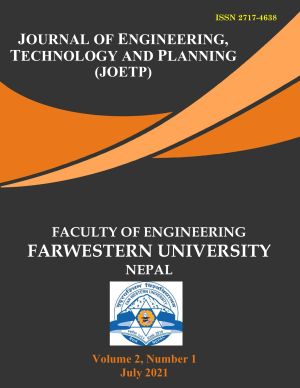Review of Underground Space Utilization and its Relevance in Nepal
DOI:
https://doi.org/10.3126/joetp.v2i1.39228Keywords:
Tunnelling in Nepal, Underground Space Utilisation, UrbanizationAbstract
Underground space, both open-cut and fully underground method, has been in use throughout the world for mining, storage, waterway, transport, and others from past centuries. But still the clear demarcation of ownership in terms of surface and underground is not clear in most parts of the world. The concept of underground space utilization is an evolving concept. The developed nations have opted for this option to accommodate growing urbanization need. Two modes of space utilization are reviewed for this paper, open excavation and full underground excavation. Also world case scenario is presented and is compared to the situation in Nepal. Social factors and geological factors in the context of Nepal are also addressed that have been crucial in case of some completed projects. Ambiguous underground rights in relation to surface ownership in Nepal is taken in account and example of some cities like Singapore, Tokyo, Helsinki is presented to make it clear how right segregation is possible and is needed for better underground space utilization. Historical evolution of Tunneling in Nepal is discussed along with the future designed and scheduled projects. Despite the geological complexity and lack of experienced manpower in the context of Himalayan geology the importance of underground space is highlighted because emerging researches and technological innovation around the world and also in Nepal have been confirming this concept now and again. As a conclusion for betterment and well managed cities in Nepal underground space would be an undefeated option in the long run.
Downloads
Downloads
Published
How to Cite
Issue
Section
License
Copyright © Faculty of Engineering, Far Western University

